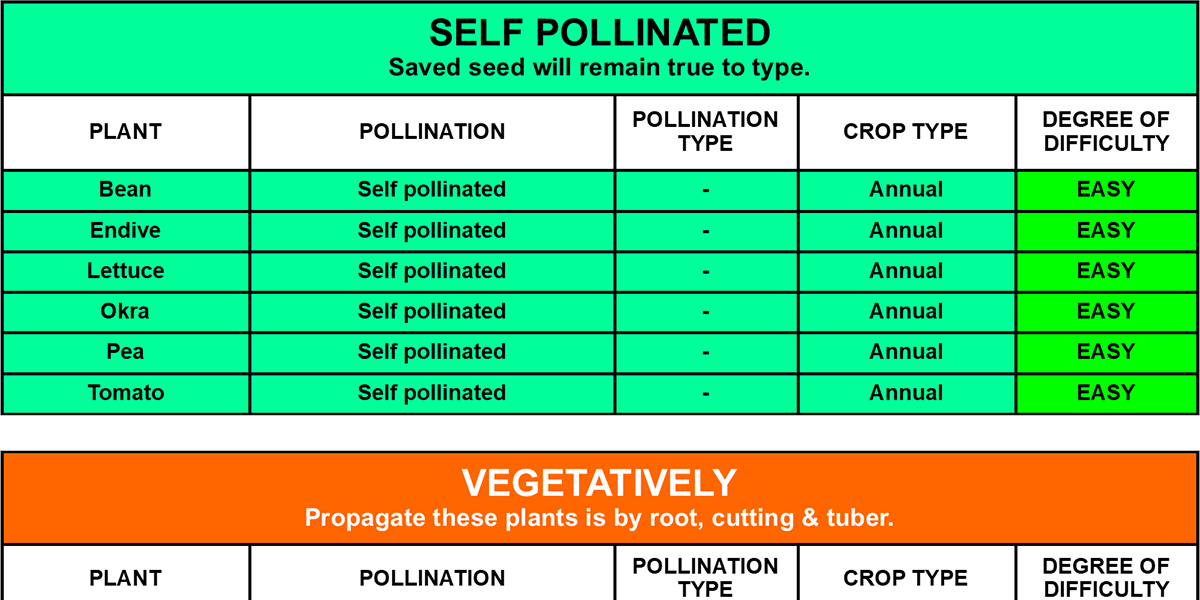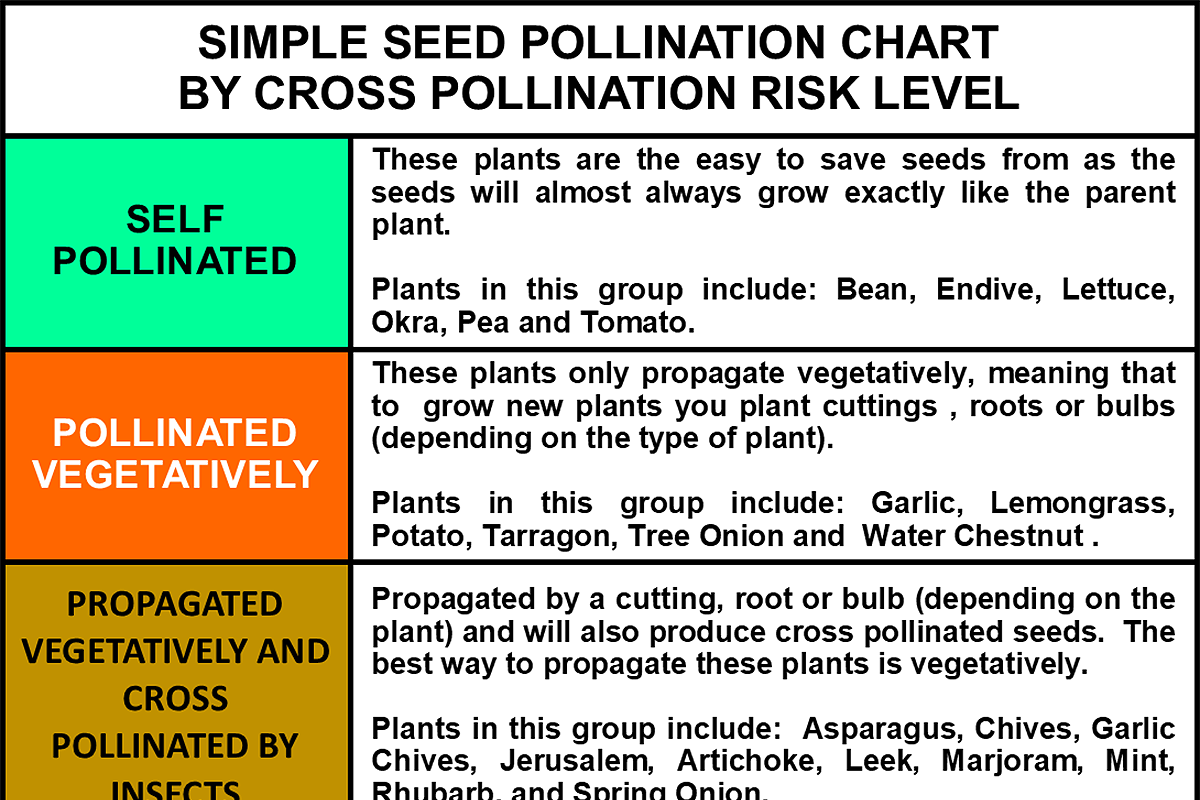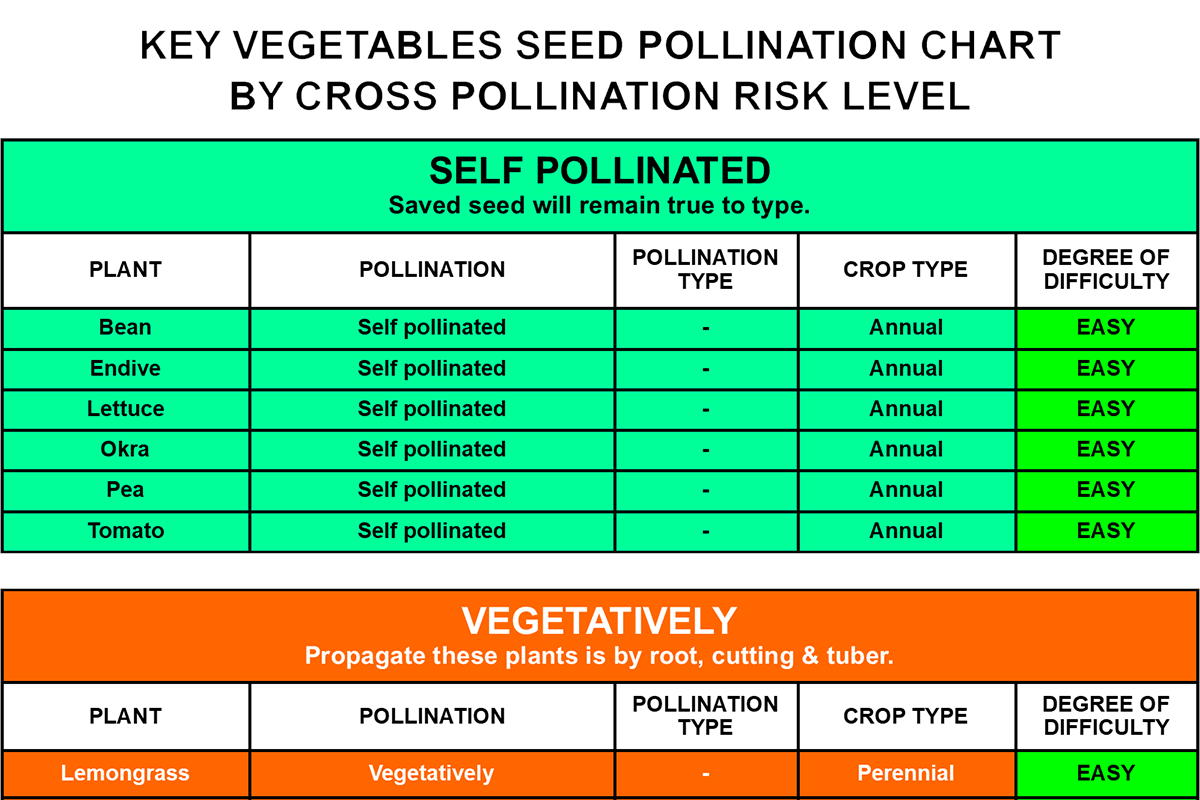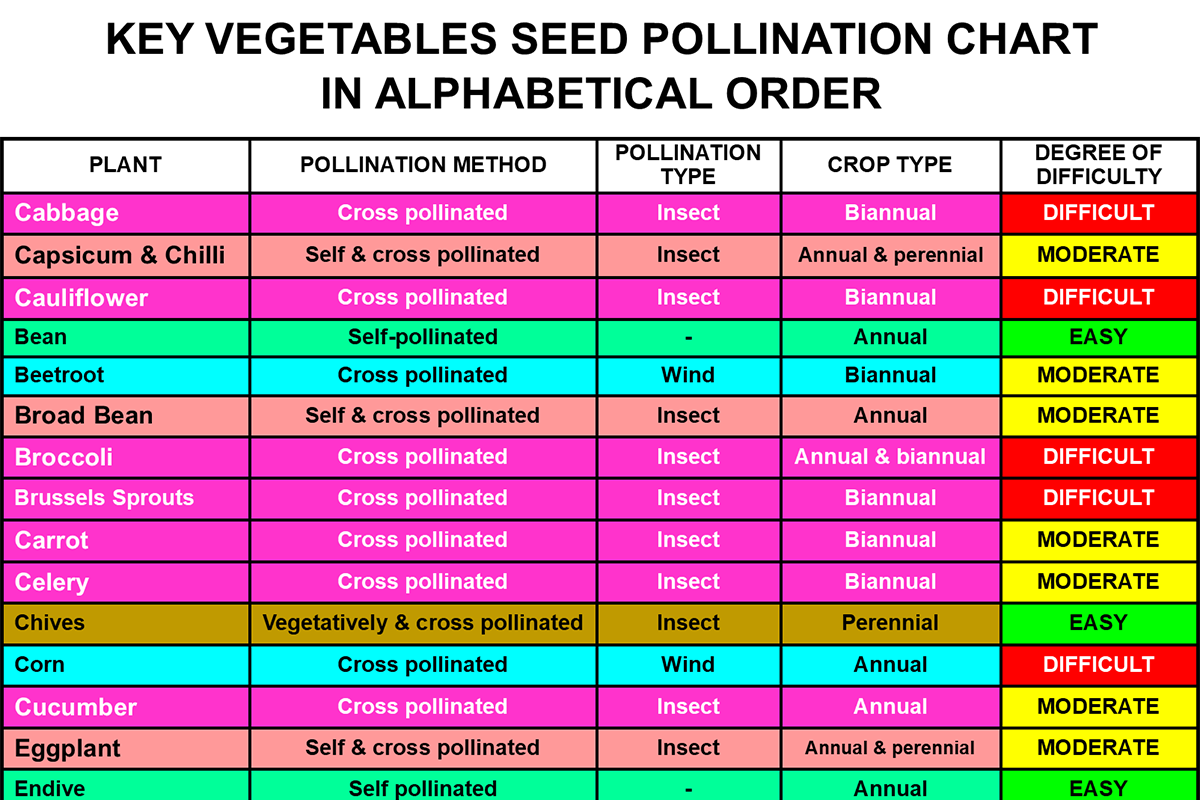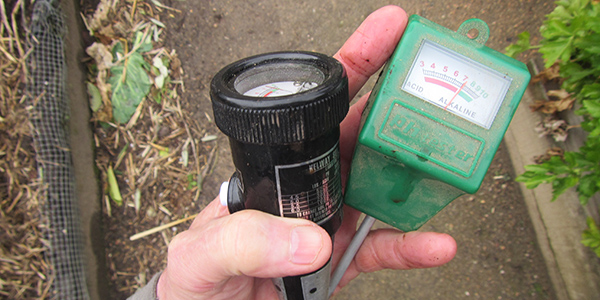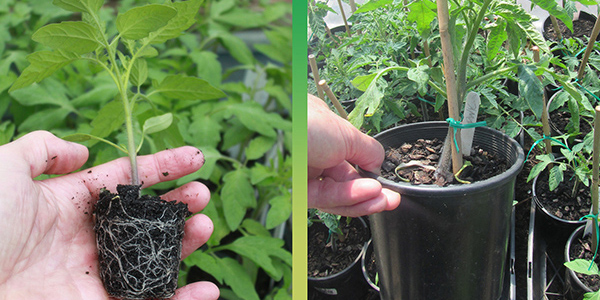Saving your own seeds is cost effective and rewarding, however some seeds are harder to save than others. This page looks at the different ways vegetable seeds are pollinated and the relative difficulties of saving them.
This Vegetable Seed Saving Suitability guide page is mainly for gardeners living in urban areas. It does not give minimum distance requirements between compatible cross pollinating plants, nor does it list minimum numbers of plants needed to maintain genetic variety. That is because urban gardeners do not have the garden space to meet these requirements.
What this guide does do is try and maximise the likelihood that the seeds an urban food gardener saves will be true to type.
SELF POLLINATED (Easy)
These plants are the easiest to collect seeds from as the seeds will always grow exactly like the parent plant. Plants in this group include Bean, Endive, Lettuce, Okra, Pea and Tomato.
PROPAGATED VEGETATIVELY (Easy)
These plants only propagate vegetatively, meaning that to grow new plants you plant cutting, root, or bulb (depending on the type of plant). Plants in this group include Garlic, Lemongrass, Potato, Tarragon, Tree Onion and Water Chestnut.
PROPAGATED VEGETATIVELY AND CROSS POLLINATED BY INSECTS (Easy, when saved vegetatively)
Propagated by a cutting, root, or bulb (depending on the plant) and will also produce cross pollinated seeds. The simplest way to propagate these plants is vegetatively. Plants in this group include Asparagus, Chives, Garlic Chives, Jerusalem Artichoke, Leek, Marjoram, Mint, Rhubarb, and Spring Onion.
POLLINATED BY WIND (Moderate to hard)
Cross pollinated by wind only, so only cross pollinates with plants of the same variety that are in the immediate area. Plants in this group include Corn and Spinach.
BOTH SELF-POLLINATED AND CROSS POLLINATED BY INSECT (Moderate to hard)
Will self-pollinate but can also be cross pollinated by insects. Plants in this group include Broad Bean, Capsicum, Chilli and Eggplant.
CROSS POLLINATED BY INSECTS (Moderate to hard)
These are the hardest types of seeds to collect as they can easily crosspollinate with other types of plants of the same species. Plants in this group include Basil, Broccoli, Cabbage, Carrot, Cauliflower, Celery, Cucumber, Fennel, Kale, Kohlrabi, Mizuna, Mustard, Onion, Parsley, Parsnip, Pumpkin, Radish, Rocket, Rockmelon, Silverbeet, Sunflower, Turnip, Watermelon and Zucchini.
* Note that these categories are based on information drawn from four seed saving pollination charts from other sources. There is some variation in the levels of difficulty between these charts, hence these categories may not be entirely accurate.
Saving seeds from vegetables that are cross pollinated by insects is harder due to the risk of cross pollination producing seeds that are not true to type. But there are some things you can do to reduce that risk. They are :-
- PRACTICE ON TRACK SEED SAVING
Which is keeping saved seeds when they produce the same plants as the parent plants but discarding them as soon as they show clear signs of genetic drift. - SAVE SEEDS NO MORE THAN THREE TIMES
Every generation of seeds that you save yourself increases the risk of cross pollination genetic contamination. Seeds rarely get beyond three generations before that contamination significantly changes the characteristics of seeds. - USE A BATCH OF GOOD SAVED SEEDS UNTIL THE END OF THEIR USE BY DATE
Once you have saved cross pollinated seeds that are true to type use those seeds each year until they are nearing their use by storage date. There is no need to save seeds from that variety every year. This is a good practice regardless of the cross pollination risk as, when saving seeds, you usually get enough seeds to last several years. - LIMIT THE NUMBER OF VARIETIES THAT YOU GROW
The fewer varieties of a vegetable that you grow the less chance of cross pollination between the varieties. PLANT VEGETABLES OF THE SAME VARIETY CLOSE TO EACH OTHER
That way when a bee (the most common form of insect cross pollination) transports pollen from one plant to another it is more likely to be cross pollinating plants of the same variety. Grouping varieties together works particularly well with vegetables that both self and cross pollinate, such as capsicum, chilli, and eggplant.
There are more sophisticated techniques for saving seeds that are cross pollinated by insects, such as covering plants or individual flowers with insect proof netting and hand pollinating, but I have little experience in these practices.
Cross pollination examples

LEFT: Capsicum that has crossed with a chilli to create a smaller capsicum with a pointed end and hotter flavour, though not as hot as a chilli. It sits next to a normal capsicum. RIGHT: Chillies that have crossed with a capsicum. Their ends were rounded and the flavour milder.
These three downloadable seed pollination charts are based on information drawn from four seed saving pollination charts from other sources but adapted to the limitations of saving seeds in an urban setting.
To download this Simple Vegetables Seed Pollination Chart By Cross Pollination Risk Level PDF click HERE.
To download this Key Vegetables Seed Pollination Chart By Cross Pollination Risk Level PDF chart click HERE.
To download this Key Vegetables Seed Pollination Chart In Alphabetical Order PDF click HERE.

